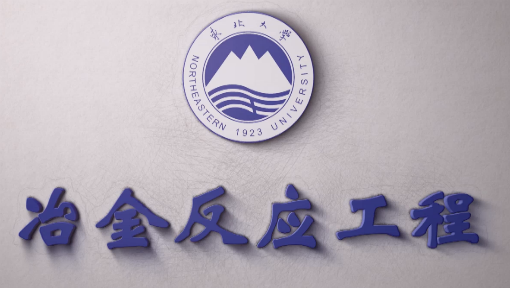
当前课程知识点:Production Engineering > Chapter 3 Wellbore Flow Performance > 3.2 Two-Phase Vertical Flow Pressure Gradient Models > 3.2.3 Pressure Gradient Calculation Using the Okiszewski Correlation
返回《Production Engineering》慕课在线视频课程列表
返回《Production Engineering》慕课在线视频列表
同学们好
本节我们学习奥氏方法压降计算
我们先看一下压力降的计算公式
压力降由摩擦能量损失 势能变化
和动能变化加起来组成的
也就是由摩擦项 重力项 以及动能项组成
而奥氏方法它认为动能项只有在雾流条件之下
这一项才会有明显的变化
而雾流状态的时候 气相和液相是同样的速度
也就是雾流的时候
混合物的流速跟气相的流速是相等的
同时 雾流条件近似于等温膨胀
等温膨胀情况之下
压力乘以它的流动速度是一个常数
如果p乘以vsg等于常数
对它求一个微分
可以得到相对应的两个变量的复合函数的求导
基于这样的一些形式
可以将这个公式展开成如下的这种形式
从而奥氏方法就得到了压降具体的计算公式
那么在这个计算公式当中
我们发现混合物的密度 以及摩擦梯度
是需要确定的最关键的量
而混合物的密度和摩擦压力梯度
都是跟流型相关的 需要针对不同的流型
来解决这两个参数它的计算方法
首先我们先看一下泡流
泡流的混合密度
可以采取含气率加权平均的方式
也就是根据含气率来得到液相气相加权平均
得到它的平均密度
为什么可以这么用
原因是泡流 液相是连续相
气泡以分散的形式存在于液相当中
如果知道了含气率 我们就可以采用
这样的公式计算出泡流的平均密度
我们知道气相和液相含率加起来是等于1的
那么对于泡流来讲
唯一的一个需要我们注意的问题就是滑脱现象
因为滑脱的问题导致了在截面上
气相液相的比例与整个体积内的体积流量
是不成正比 因此我们可以写出滑脱速度
应该是真实的气相速度减掉真实的液相速度
这个地方用了表观流速比上含气率
就是真实的流速
而液相同样的表观流速比上持液率
也能够得到真实流速
整理一下之后 我们就可以得到
以气相和液相体积流量以及管段的截面积
来计算的滑脱速度
这里面出现了我们关心的气相的含气率
换一种写法 我们将气相的含气率
可以把它表达成滑脱速度的形式
也就是在这个式子当中
如果我们知道了滑脱速度的话
就可以计算出它所对应的含气率
而对于泡流来说
通过大量的实验观察
我们发现泡流的滑脱速度是一个相对稳定的值
是多少呢 0.244米/秒
对于这样的一个固定的滑脱速度
我们把它代入到这个公式里面
就得到了所对应的气相的含气率
而知道了含气率
我们就可以去计算泡流的混合物密度了
对于泡流的摩擦梯度
它的计算里面要用到vl液相的流速
要用到摩擦系数f
而摩擦系数
一般情况之下 我们可以采取莫迪图
通过查图来实现
也就是通过管壁的相对粗糙度 通过雷诺数
查图以后得到所对应的摩擦系数
这就是对泡流的时候摩擦梯度是这么来确定的
我们来看段塞流
段塞流动跟泡流是不一样的
它的这种不均匀的分布状态
决定了它的密度 它的摩擦梯度
都是不一样的计算方法
奥氏方法中 段塞流的混合物密度
是采用这个公式来计算的
这里面同样的要用到滑脱速度
要用到一个δ 就是液相的分布系数
这些是要在段塞流中要确定的量
同样的 摩擦梯度也有对应的计算公式
同样存在滑脱速度以及液相的分布系数
对于滑脱速度来说
泡流就不是简单的一个固定值0.244米/秒了
而是根据不同的流动的状态
这里面用到了Nb 就是泡流的雷诺数
根据它的不同
确定了段塞流动滑脱速度的计算式
同样的 对于液相的分布系数来说
也是用类似的处理的办法来实现
雾流 对于雾流的混合物密度
采取的是跟泡流类似的方式
为什么 原因就是雾流是气相为连续相
而液相为分散相的一种流动状态
混合物密度是可以采取这种
加权平均的方式实现的
前提是要知道含气率的多少
而雾流相对于泡流来说 它是没有滑脱的
我们认为雾流的气液没有相对的运动速度
所以说基本上是没有滑脱
没有滑脱的情况之下
我们就比较简单的可以采用气相和混合物
体积流量的比值来表达气相的含气率
同样的速度运行的 所以含气率的大小
就应该是体积流量的比值
所以说我们采用这样的一个办法
得到了含气率之后
就可以计算出混合物的密度了
同样的 对于摩擦梯度来说
我们也采取了类似的处理的办法
那么要注意的是 计算摩擦梯度的时候
我们要采取气相的雷诺数来计算
为什么 气相是连续相
我们要采取液膜的相对粗糙度
来查这个莫迪图
为什么 是因为雾流的情况之下
沿管壁是有一层液膜的
不能用管壁的相对粗糙度
而是要用液膜的相对粗糙度
这是摩擦梯度计算的时候要注意的问题
过渡流动
是介于雾流和段塞流之间的一种流动状态
那么奥氏方法在处理过渡流的时候
是采取了先按段塞流和雾流分别计算
然后再用内插法来确定的这样一种办法
也就是它没有专门提供过渡流的计算方法
而是用雾流和段塞流分别处理
然后再插值
这里面我们看混合物的密度是怎么插值的
分别的算了 按段塞流算 按雾流算
算了两个密度
插值是用了气相的无因次速度
跟LM和LS之间做插值
得到了过渡流的混合物密度
同样的处理办法 能够得到过渡流的摩擦梯度
那么以上就是介绍了奥氏方法中
针对四种不同的流型提出来的
关键的两个参数 混合物密度和摩擦梯度
它的计算方法
有了这些计算方法 我们就可以在整个的
井筒管段里面判断出当前管段下的流型
然后根据特定的流型去计算这种流型
对应的压力梯度
以上就是本节的主要内容
同学们再见
-1.1 Main Tasks of Production Engineering
--1.1 Main Tasks of Production Engineering
-1.2 Flow in Production System
--1.2 Flow in Production System
-Problems
--Chapter 1 - Problems
-2.1 IPR Curve and Well Productivity
--2.1.1 Single-Phase Oil Inflow Performance Relationships
-2.2 Vogel's IPR and Applications
--2.2.2 Determination of IPR Curves Using Vogel's Equation
--2.2.3 Skin Factor and Flow Efficiency
--2.2.4 Extension of Vogel's Equation for Non-Complete Wells
--2.2.5 Combination Single-Phase Liquid and Two-Phase Flow
-Problems
--Chapter 2--Problems
-3.1 Two-Phase Flow in Wellbore
--3.1.1 Flow Regimes in Vertical Flow
-3.2 Two-Phase Vertical Flow Pressure Gradient Models
--3.2.1 Two-Phase Pressure Gradient Equations
--3.2.2 Predicting Gas-Liquid Flow Regimes Using the Okiszewski Correlation
--3.2.3 Pressure Gradient Calculation Using the Okiszewski Correlation
-3.3 Vertical Lift Performance
--3.3 Vertical Lift Performance
-Problems
--Chapter 3--Problems
-4.1 Nodal Analysis Approach
--4.1.2 Solution Node at Bottom of Well
--4.1.3 Solution Node at Wellhead
-4.2 Flow through Chokes
--4.2.2 Solution Node at Choke
-Problems
--Chapter 4--Problems
-5.1 Principles of Gas Lift
--5.1.2 Initial Kick-off of Gas Lift
-5.2 Gas Lift Valves and Gas Lift Completions
-5.3 Gas Lift Design
--5.3.1 Gas Lift Design for Specific Production Rate
--5.3.2 Gas Lift Design for Specific Injection Rate
--5.3.3 Kick-off Procedure with Unloading Valves
--5.3.4 Design Depths of Unloading Valves
-Problems
--Chapter 5--Problems
-6.1 Introduction of Surface and Downhole Equipment
-6.2 Operating Principle of Sucker Rod Pumps
-6.3 Pumping Unit Kinematics
--6.3.1 Motion of Polished Rod-Simple Harmonic Motion
--6.3.2 Motion of Polished Rod-Crank and Pitman Motion
-6.4 Polished Rod Load
--6.4.3 Peak Polished Rod Load and Minimum Polished Rod Load
-Problems
--Problems for chapter 6: Sucker Rod pumping I
-6.5 Calculation of Counterbalancing, Torque and Power
--6.5.1 Balance of Pumping Unit
--6.5.2 Counterbalancing Calculation
--6.5.3 Torque and Torque Factor
-6.6 Volumetric Efficiency of Pump
--6.6.2 Gas Effect on Pump Performance
--6.6.3 Measures of Enhancing Pump Volumetric Efficiency
-6.7 Design of Pumping System
--6.7.1 Strength Calculation and Design of Sucker Rod Strings
--6.7.2 Design Procedures of Pumping System
-6.8 Analysis of Sucker Rod Pumping Well Conditions
--6.8.1 Acoustic Surveys and Analysis of Annular Liquid Levels
--6.8.2 Introduction of Dynamometer Card
--6.8.3 Typical Dynamometer Cards
-Problems
--Problems: Chapter 6: Sucker Rod Pumping (II)
-7.1 Water Injection System
--7.1.1 Water Resources and Water Treatment
--7.1.2 Introduction of Water Injection System
-7.2 Injectivity Analysis
--7.2.1 Injectivity and Injectivity Index Curves
-7.3 Injection Tubing String
--7.3 Introduction of Injection Tubing Strings
-7.4 Analysis and Application of Injectivity Index Curves
--7.4.1 Analysis of Injectivity Index Curves
--7.4.2 Injection Choke Deployment
-Problems
--Chapter 7--Problems
-8.0 Introduction
-8.1 The Fracturing of Reservoir Rock
--8.1.1 Basic Rock Mechanics Parameters
--8.1.4 Fracture Initiation Conditions
-Problems
--Chapter 8(I)--Problems
-8.2 Fracturing Fluids
--8.2.2 Fluid-Loss Properties of Fracturing Fluids
--8.2.3 Rheological Properties of Fracturing Fluids
-8.3 Proppants
-8.4 Hydraulic Fracturing Design
--8.4.1 Productivity Index of Hydraulic Fracturing Wells
--8.4.2 Fracture Geometry Models
--8.4.3 Design Procedure for Hydraulic Fracturing
-Problems
--Chapter 8(II)--Problems
-9.0 Introduction
-9.1 Carbonate Acidizing
--9.1.1 Mechanism of Carbonate Acidizing
--9.1.2 Effect Factors of Reaction Rate
--9.1.4 Effective Distance of Live Acid
-9.2 Sandstone Acidizing
--9.2.1 Mechanism of Sandstone Acidizing
--9.2.2 Mud Acid Treatment Design
-9.3 Acidizing Treatment Technologies
--9.3.2 Acidizing Treatment Operations
-Problems
--Chapter 9--Problems
-Final Exam

